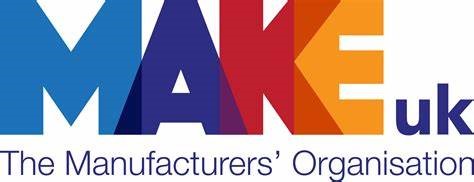
Export support must reflect companies’ efforts to grow into new markets.
The majority of English regions and Wales are seeing a downward trend in their share of manufacturing exports to the EU suggesting a potential structural shift in the UK’s trade patterns, according to analysis published by Make UK and accountancy and business advisory firm BDO.
The analysis of official data as part of the Make UK/BDO Regional Manufacturing Outlook Report 2023 shows that the UK’s overall share of manufacturing exports to the EU increased in 2022 to 52% from 50% in 2019. However, this was a result of sharp increases in the share of exports to the EU from Northern Ireland and Scotland over the same period, without which the overall UK share of goods exports would also be on a downward trend.
Northern Ireland enjoys a unique Dual Access position retaining access to the Single Market for goods and being able to trade goods freely into the rest of Great Britain, while in Scotland the oil and gas sector and its supply chains boosted exports to the EU during the ongoing Ukraine crisis.
Furthermore, given the share of goods exports to both Asia & Oceania and North America has remained relatively stable at around 16% since 2019, this would indicate that UK manufacturers are looking at opportunities outside their traditional big three markets.
According to Make UK, this has significant implications for Government policy on export support if the share of trade with the UK’s nearest and most important market is falling and businesses are looking for opportunities elsewhere. In response, Make UK is calling for a boost to export support for companies, especially SMEs, as well as changes to existing structures to provide more support for companies exporting to countries outside the EU.
Verity Davidge, Director of Policy at Make UK, said:
“Given the EU remains the most important market for manufacturers, efforts still need to be made to improve the existing agreement with the EU to reduce barriers to trade. However, UK trade patterns may be undergoing a gradual shift with many companies continuing to look for opportunities in other markets. This has significant implications for export support and Government policy must reflect this.”
Richard Austin, Head of Manufacturing at BDO, said:
“These figures are reflective of the combined impact of Brexit, the pandemic and the Ukraine war. UK regions are the powerhouses of UK manufacturing but the body blows of the last few years are taking their toll. Manufacturers have warned that the shackles of red tape, supply chain pressures and rising costs are at risk of permanently undermining the competitiveness of UK goods.”
According to the analysis, only London & the South East and the East of England (49% to 50% and 49% to 54% respectively) have seen their share of goods exports to the EU increase since 2019 (the last full year before the Trade & Co-operation Agreement), whereas all other English regions and Wales have seen falls. By contrast, in the same period Northern Ireland has seen its share increase from 59% to almost two thirds (64%), while Scotland has seen an even sharper increase (50% to 59%).
The South West’s share of goods exports to the EU was the lowest of all UK regions in 2022 at just 42%, followed by the West Midlands (45%) and East Midlands (49%).
The analysis also shows that some UK regions are seeing a sharp divergence in exports to North America and Asia and Oceania (2) which, according to Make UK, may be linked to sectoral strengths and a trend towards diversification of supply chains with more businesses targeting export opportunities elsewhere.
The West Midlands saw almost a quarter of its exports go to North America (24%) in 2022 compared to 17% to Asia & Oceania, mainly driven by automotive linked exports. Wales also saw a significant difference between the two markets with almost a fifth of exports (19%) going to North America and 11% to Asia and Oceania, mainly linked to the aerospace supply chain in Wales.
By contrast the East Midlands saw a quarter of its exports go to Asia & Oceania and 14% to North America.
In order to help boost exports, especially by SMEs, Make UK has made the following recommendations:
- Extend the geographical reach of the Export Support Service (ESS).The ESS should be extended to include all key UK export markets, not limited to the EU. In addition, a ‘continuous improvement’ approach to the advice available should be embedded as early evidence suggests in its current form it is a ‘signposting’ service and not for bespoke advisory work.
- Ensure the package of grants and practical support to assist exporters attend trade shows and similar events overseas remains in step with export market priorities and demands of exporters: Government should consider re-instating the Trade Access Programme (TAP) which was valued by manufacturing SMEs. This would help ensure current programmes meet the demands and priorities of existing and potential exporters.
- The Export Academy (or similar channel) should create a bespoke financial package to boost the skills base for exporters to improve knowledge in exporting. Company level exporting strategies should be as important as a marketing or business development strategy, however businesses do not have easy access to provision to help build that expertise domestically. Too often business export strategies are underutilised, therefore there is a need to identify partners to build up UK expertise on trade through schools, universities and within business.













